However, voluntary turnover is often avoidable, and its important to closely monitor it by calculating it quarterly or even monthly. When one employee leaves and a new employee fills their position, this is a piece of the companys turnover. Sometimes, employees feel they have few opportunities for advancement, so you might also develop strategies to promote deserving employees. Empowering employees to recognize their peers can be equally, if not more, effective, and peer-to-peer recognition is becoming a powerful tool for retention. (And How To Improve Your Process), 15 Genius Hour Ideas To Use in the Classroom, Data Lake vs. Data Warehouse vs. Data Mart: A Definitive Guide, How To Grow a YouTube Channel in 8 Steps (With Tips), 11 Types of Help Desk Software for Professionals, What Does Sourcing Mean? Retention often includes strategies for keeping employees working for a company. Here's an example of how a company can measure its retention rate: A company with 120 employees at the start of a year loses 15 by the end of the year, leaving 105 employees.
Working to understand and improve the employee experience within the organization is the first step. The business can look into the characteristics driving turnover at that store. 
 Why Measuring Employee Retention & Turnover Matters, How to Calculate Employee Retention & Turnover Rates. Many companies measure turnover more frequently, often on a monthly basis, although they may do annual turnover calculations. For example, an employee whose spouse has been relocated or a colleague leaving to take care of an ailing family member. Smart HR software that transforms the way you manage your staff.
Why Measuring Employee Retention & Turnover Matters, How to Calculate Employee Retention & Turnover Rates. Many companies measure turnover more frequently, often on a monthly basis, although they may do annual turnover calculations. For example, an employee whose spouse has been relocated or a colleague leaving to take care of an ailing family member. Smart HR software that transforms the way you manage your staff.  Businesses that attract good employees with the right skill sets may deliver their products and services more effectively and gain customer support and loyalty. Lets look at the calculations together. Some causes of employee turnover include values misalignment, a more enticing career opportunity, or a lack of development opportunities. Actionable articles to help managers improve in theirrole. Registered in England and Wales No: 09283467. Average number of employees: From there, calculate the average number of employees per month by taking each months total and dividing by the number of months or the total headcount from each report if run more than once a month/number of reports used. Brainyard delivers data-driven insights and expert advice to help businesses discover, interpret and act on emerging opportunities and trends. HR performance management systems make that process less formulaic and more conversational and relevant. HR analytics, also known as people analytics, is poised to be a major initiative for companies over the next five years, and having a central database of information will ease the collection of HR data and ensure everyone is working with the same numbers. Using exit interviews, in which you can directly ask departing employees why theyre leaving.
Businesses that attract good employees with the right skill sets may deliver their products and services more effectively and gain customer support and loyalty. Lets look at the calculations together. Some causes of employee turnover include values misalignment, a more enticing career opportunity, or a lack of development opportunities. Actionable articles to help managers improve in theirrole. Registered in England and Wales No: 09283467. Average number of employees: From there, calculate the average number of employees per month by taking each months total and dividing by the number of months or the total headcount from each report if run more than once a month/number of reports used. Brainyard delivers data-driven insights and expert advice to help businesses discover, interpret and act on emerging opportunities and trends. HR performance management systems make that process less formulaic and more conversational and relevant. HR analytics, also known as people analytics, is poised to be a major initiative for companies over the next five years, and having a central database of information will ease the collection of HR data and ensure everyone is working with the same numbers. Using exit interviews, in which you can directly ask departing employees why theyre leaving. 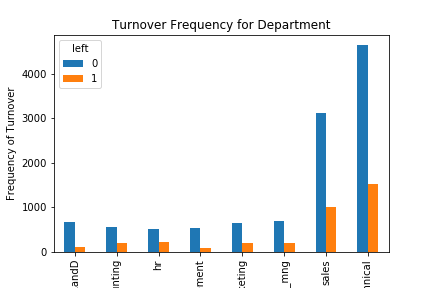 Retention vs.
Retention vs. .gif) Get tailor-made HR support for your business size, Give your business the best possible start with BrightHR. While competition for talent will be most intense in high-demand industries like healthcare, minimizing turnover is a goal for most businesses.
Get tailor-made HR support for your business size, Give your business the best possible start with BrightHR. While competition for talent will be most intense in high-demand industries like healthcare, minimizing turnover is a goal for most businesses.
Zapier lets you connect BrightHR with up to 5,000+ other web services.
All this on top of the stress of finding a competent new hire to support the team.
Employee turnover is calculated by dividing the number of terminations by the average number of employees in a given timeframe, and multiplying this number by 100. The more easily HR teams can track KPIs, the better they can help reduce turnover because analyzed data becomes actionable data.  Why is that? This is an area HR teams need to address because even modest improvements in supervisor ratings can significantly decrease the likelihood of an employee leaving. Get your people in the same mindset with OKR goals and 1-on-1 meetings. A company where the employees feel valued and well treated is more likely to have higher retention.
Why is that? This is an area HR teams need to address because even modest improvements in supervisor ratings can significantly decrease the likelihood of an employee leaving. Get your people in the same mindset with OKR goals and 1-on-1 meetings. A company where the employees feel valued and well treated is more likely to have higher retention.
This is where you find yourself in the midst of the challenges of managing employee retention and turnover. Retention and turnover are two important concepts for analyzing the relationship between businesses and employees. The remaining seven left at different months in the year, and five more were rehired. Recognition neednt only come from the employees manager. Although companies often use these two metrics together, there are several important differences between them.
Employee retention is calculated by dividing the number of employees that worked a whole time period by the number of active employees at the start of that time period, and multiplying this number by 100. Heres why. Tracking these numbers can help you understand and minimize turnovers negative impact and consider investing in employee retention strategies. They didnt take into account new hires, only employees who worked the whole year. Companies may consider this a type of turnover and monitor employees' reasons for transferring.  Retention doesnt bring new hires into the equation, but turnover does. Poor managers are consistently named across retention and turnover studies as a top reason that employees leaveand good ones are a key reason people stay. Companies with higher levels of employee engagement have lower turnover rates as much as 43% lower for companies that have less than 40% annualized turnover, according to a study of more than 112,000 business units by analytics firm Gallup. The state of employee experience, from here on out, The ultimate one-on-one meetings guide for managers & employees, The differences between employee turnover and retention, How to fight turnover and improve retention. Related: .css-1v152rs{border-radius:0;color:#2557a7;font-family:"Noto Sans","Helvetica Neue","Helvetica","Arial","Liberation Sans","Roboto","Noto",sans-serif;-webkit-text-decoration:none;text-decoration:none;-webkit-transition:border-color 200ms cubic-bezier(0.645, 0.045, 0.355, 1),background-color 200ms cubic-bezier(0.645, 0.045, 0.355, 1),opacity 200ms cubic-bezier(0.645, 0.045, 0.355, 1),border-bottom-color 200ms cubic-bezier(0.645, 0.045, 0.355, 1),border-bottom-style 200ms cubic-bezier(0.645, 0.045, 0.355, 1),border-bottom-width 200ms cubic-bezier(0.645, 0.045, 0.355, 1),border-radius 200ms cubic-bezier(0.645, 0.045, 0.355, 1),box-shadow 200ms cubic-bezier(0.645, 0.045, 0.355, 1),color 200ms cubic-bezier(0.645, 0.045, 0.355, 1);transition:border-color 200ms cubic-bezier(0.645, 0.045, 0.355, 1),background-color 200ms cubic-bezier(0.645, 0.045, 0.355, 1),opacity 200ms cubic-bezier(0.645, 0.045, 0.355, 1),border-bottom-color 200ms cubic-bezier(0.645, 0.045, 0.355, 1),border-bottom-style 200ms cubic-bezier(0.645, 0.045, 0.355, 1),border-bottom-width 200ms cubic-bezier(0.645, 0.045, 0.355, 1),border-radius 200ms cubic-bezier(0.645, 0.045, 0.355, 1),box-shadow 200ms cubic-bezier(0.645, 0.045, 0.355, 1),color 200ms cubic-bezier(0.645, 0.045, 0.355, 1);border-bottom:1px solid;cursor:pointer;}.css-1v152rs:hover{color:#164081;}.css-1v152rs:active{color:#0d2d5e;}.css-1v152rs:focus{outline:none;border-bottom:1px solid;border-bottom-color:transparent;border-radius:4px;box-shadow:0 0 0 1px;}.css-1v152rs:focus:not([data-focus-visible-added]){box-shadow:none;border-bottom:1px solid;border-radius:0;}.css-1v152rs:hover,.css-1v152rs:active{color:#164081;}.css-1v152rs:visited{color:#2557a7;}@media (prefers-reduced-motion: reduce){.css-1v152rs{-webkit-transition:none;transition:none;}}.css-1v152rs:focus:active:not([data-focus-visible-added]){box-shadow:none;border-bottom:1px solid;border-radius:0;}How To Calculate Employee Turnover.css-r5jz5s{width:1.5rem;height:1.5rem;color:inherit;display:-webkit-inline-box;display:-webkit-inline-flex;display:-ms-inline-flexbox;display:inline-flex;-webkit-flex:0 0 auto;-ms-flex:0 0 auto;flex:0 0 auto;height:1em;width:1em;margin:0 0 0.25rem 0.25rem;vertical-align:middle;}. Turnover: What's the Difference? Employee turnover and retention rates provide strong indicators about how well the business is taking care of its people. Avoidable turnover: Avoidable turnover occurs when employees leave voluntarily for preventable reasons. Involuntary turnover is severance from employment by the employer when the employee was willing and able to continue performing services. The percentage of workers that leave an organization and are replaced by a new hire in a given time period is the companys turnover rate. Involuntary turnover: Involuntary turnover happens when a company ends a staff member's employment because of staff reductions or performance issues. The Bureau of Labor defines retirements, deaths, disabilities as other separations. The retention rate for Drumroll Please for 2019 is 90%. For example, say music supply store Drumroll Please employs 100 people across three locations. The company hired eight people to replace those 10.
Retention doesnt bring new hires into the equation, but turnover does. Poor managers are consistently named across retention and turnover studies as a top reason that employees leaveand good ones are a key reason people stay. Companies with higher levels of employee engagement have lower turnover rates as much as 43% lower for companies that have less than 40% annualized turnover, according to a study of more than 112,000 business units by analytics firm Gallup. The state of employee experience, from here on out, The ultimate one-on-one meetings guide for managers & employees, The differences between employee turnover and retention, How to fight turnover and improve retention. Related: .css-1v152rs{border-radius:0;color:#2557a7;font-family:"Noto Sans","Helvetica Neue","Helvetica","Arial","Liberation Sans","Roboto","Noto",sans-serif;-webkit-text-decoration:none;text-decoration:none;-webkit-transition:border-color 200ms cubic-bezier(0.645, 0.045, 0.355, 1),background-color 200ms cubic-bezier(0.645, 0.045, 0.355, 1),opacity 200ms cubic-bezier(0.645, 0.045, 0.355, 1),border-bottom-color 200ms cubic-bezier(0.645, 0.045, 0.355, 1),border-bottom-style 200ms cubic-bezier(0.645, 0.045, 0.355, 1),border-bottom-width 200ms cubic-bezier(0.645, 0.045, 0.355, 1),border-radius 200ms cubic-bezier(0.645, 0.045, 0.355, 1),box-shadow 200ms cubic-bezier(0.645, 0.045, 0.355, 1),color 200ms cubic-bezier(0.645, 0.045, 0.355, 1);transition:border-color 200ms cubic-bezier(0.645, 0.045, 0.355, 1),background-color 200ms cubic-bezier(0.645, 0.045, 0.355, 1),opacity 200ms cubic-bezier(0.645, 0.045, 0.355, 1),border-bottom-color 200ms cubic-bezier(0.645, 0.045, 0.355, 1),border-bottom-style 200ms cubic-bezier(0.645, 0.045, 0.355, 1),border-bottom-width 200ms cubic-bezier(0.645, 0.045, 0.355, 1),border-radius 200ms cubic-bezier(0.645, 0.045, 0.355, 1),box-shadow 200ms cubic-bezier(0.645, 0.045, 0.355, 1),color 200ms cubic-bezier(0.645, 0.045, 0.355, 1);border-bottom:1px solid;cursor:pointer;}.css-1v152rs:hover{color:#164081;}.css-1v152rs:active{color:#0d2d5e;}.css-1v152rs:focus{outline:none;border-bottom:1px solid;border-bottom-color:transparent;border-radius:4px;box-shadow:0 0 0 1px;}.css-1v152rs:focus:not([data-focus-visible-added]){box-shadow:none;border-bottom:1px solid;border-radius:0;}.css-1v152rs:hover,.css-1v152rs:active{color:#164081;}.css-1v152rs:visited{color:#2557a7;}@media (prefers-reduced-motion: reduce){.css-1v152rs{-webkit-transition:none;transition:none;}}.css-1v152rs:focus:active:not([data-focus-visible-added]){box-shadow:none;border-bottom:1px solid;border-radius:0;}How To Calculate Employee Turnover.css-r5jz5s{width:1.5rem;height:1.5rem;color:inherit;display:-webkit-inline-box;display:-webkit-inline-flex;display:-ms-inline-flexbox;display:inline-flex;-webkit-flex:0 0 auto;-ms-flex:0 0 auto;flex:0 0 auto;height:1em;width:1em;margin:0 0 0.25rem 0.25rem;vertical-align:middle;}. Turnover: What's the Difference? Employee turnover and retention rates provide strong indicators about how well the business is taking care of its people. Avoidable turnover: Avoidable turnover occurs when employees leave voluntarily for preventable reasons. Involuntary turnover is severance from employment by the employer when the employee was willing and able to continue performing services. The percentage of workers that leave an organization and are replaced by a new hire in a given time period is the companys turnover rate. Involuntary turnover: Involuntary turnover happens when a company ends a staff member's employment because of staff reductions or performance issues. The Bureau of Labor defines retirements, deaths, disabilities as other separations. The retention rate for Drumroll Please for 2019 is 90%. For example, say music supply store Drumroll Please employs 100 people across three locations. The company hired eight people to replace those 10. 
 Although the eNPS doesnt necessarily reflect retention and turnover rates, it can give us a rough idea of how happy employees are, and how inclined would they be to explore other opportunities.
Although the eNPS doesnt necessarily reflect retention and turnover rates, it can give us a rough idea of how happy employees are, and how inclined would they be to explore other opportunities. 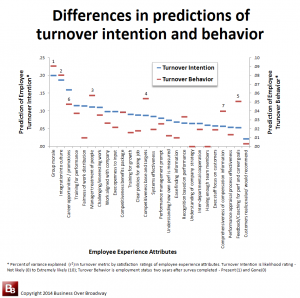 You need to put in extra work to support overworked employees, and might have to deal with low morale and low productivity. A good indicator of that is that the sum of both rates doesnt necessarily add up to 100%. With a monthly average of 105 employees, Be Happy ended up with an annual turnover rate of 23%.
You need to put in extra work to support overworked employees, and might have to deal with low morale and low productivity. A good indicator of that is that the sum of both rates doesnt necessarily add up to 100%. With a monthly average of 105 employees, Be Happy ended up with an annual turnover rate of 23%.  Those who answer 7 or 8 are considered passive and those who answer 6 or less are considered detractors.
Those who answer 7 or 8 are considered passive and those who answer 6 or less are considered detractors. 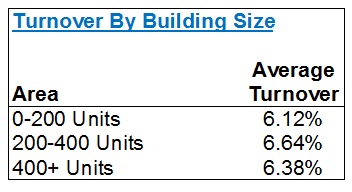 High retention and low turnover may show business leaders and managers that their hiring processes are effective and that they have high employee satisfaction. And if it cant attract more people with new and specialized skills, it cant innovate or execute on growth plans. Many of the causes of turnover are preventable. Would you be interested in receiving our newsletter directly in your inbox? When comparing top quartile and bottom quartile engagement business units and teams, Gallup found a differential of 23% in profitability and 10% in customer loyalty. Over 7,000 questions and answers, for business owners and employers, powered by qualified experts. Transfers: Internal transfers occur when an employee moves from one department to another.
High retention and low turnover may show business leaders and managers that their hiring processes are effective and that they have high employee satisfaction. And if it cant attract more people with new and specialized skills, it cant innovate or execute on growth plans. Many of the causes of turnover are preventable. Would you be interested in receiving our newsletter directly in your inbox? When comparing top quartile and bottom quartile engagement business units and teams, Gallup found a differential of 23% in profitability and 10% in customer loyalty. Over 7,000 questions and answers, for business owners and employers, powered by qualified experts. Transfers: Internal transfers occur when an employee moves from one department to another. 
What Is Fintech and Which Companies Typically Use It.  Attrition happens when people retire, roles are abolished, or when the manager or company simply decides not to make a new hire in their place. Those three new positions are counted for the month of September, and one more person decides to leave, for a turnover rate of 1%. Analysts usually express turnover as a percentage of the total number of employees who leave during a certain time frame, typically a month or a year. Total separations: The number of separations during a month includes both voluntary and involuntary terminations; employees who are temporarily laid off, on furloughs or on a leave of absence are not included. Advertising and Digital Marketing Agencies. Here's an example of how to measure turnover rate: Out of a workforce of 120, three employees have left voluntarily over the past month.
Attrition happens when people retire, roles are abolished, or when the manager or company simply decides not to make a new hire in their place. Those three new positions are counted for the month of September, and one more person decides to leave, for a turnover rate of 1%. Analysts usually express turnover as a percentage of the total number of employees who leave during a certain time frame, typically a month or a year. Total separations: The number of separations during a month includes both voluntary and involuntary terminations; employees who are temporarily laid off, on furloughs or on a leave of absence are not included. Advertising and Digital Marketing Agencies. Here's an example of how to measure turnover rate: Out of a workforce of 120, three employees have left voluntarily over the past month.
This includes whether it is paying competitive salaries, providing training and opportunities for advancement and offering a good work/life balance for employees, as well as how effective management is.
Turnover may be voluntary or involuntary. While the overall retention rate is 90%, the rate for that store is lower. Tel: 0800 783 2806. Human resources software plays a crucial role in reducing turnover and helping to retain employees. Voluntary turnover measures those who left to take a new job, pursue educational opportunities, for personal reasons or to retire or who have passed away. So, lets get down to business and talk about the nuts and bolts of retention and turnover. However, if new hires decide to leave, thats definitely worth investigating. Voluntary turnover, on the other hand, happens when employees decide to leave the organization of their own volition. 
On a scale of 1 to 10, those who answer 9 or 10 (i.e., are very likely to recommend working at your company) are considered promoters. Policies you can implement to measure reasons for leaving include: Be aware that employees may not always be honest about their own reasons for leaving! The reasons employees leave are remarkably consistent across studies: poor career development opportunities, poor work-life balance, a bad manager and inadequate compensation and benefits. Ask a question and get a lightning fast answer, Helpful blogs, articles, reports, infographics and much more, If you or any member of your team are having issues we are always here to help. The buyer's guide to employee experience solutions. The U.S. Bureau of Labor Statistics projects that over the next decade the economy will add 6 million jobs. Turnover and retention are closely linked to employee engagement. Involuntary turnover happens when the organization decides to end the work relationship with the employee. This may occur at the end of certain projects or development phases. A more-focused turnover calculation for total dismissals, or total voluntary resignations, might prove more useful. Although at first glance they may seem like exact opposite concepts, thats not actually true. Improve Retention and Turnover with Software, How to Manage Payroll for a Small Business, 12 Top Employee Experience Metrics & KPIs to Measure, Guide to Inbound and Outbound Logistics: Processes, Differences and How to Optimize. High turnover and low retention rates signal problems with aspects of the organizations culture and employee experience. Read more: .css-1v152rs{border-radius:0;color:#2557a7;font-family:"Noto Sans","Helvetica Neue","Helvetica","Arial","Liberation Sans","Roboto","Noto",sans-serif;-webkit-text-decoration:none;text-decoration:none;-webkit-transition:border-color 200ms cubic-bezier(0.645, 0.045, 0.355, 1),background-color 200ms cubic-bezier(0.645, 0.045, 0.355, 1),opacity 200ms cubic-bezier(0.645, 0.045, 0.355, 1),border-bottom-color 200ms cubic-bezier(0.645, 0.045, 0.355, 1),border-bottom-style 200ms cubic-bezier(0.645, 0.045, 0.355, 1),border-bottom-width 200ms cubic-bezier(0.645, 0.045, 0.355, 1),border-radius 200ms cubic-bezier(0.645, 0.045, 0.355, 1),box-shadow 200ms cubic-bezier(0.645, 0.045, 0.355, 1),color 200ms cubic-bezier(0.645, 0.045, 0.355, 1);transition:border-color 200ms cubic-bezier(0.645, 0.045, 0.355, 1),background-color 200ms cubic-bezier(0.645, 0.045, 0.355, 1),opacity 200ms cubic-bezier(0.645, 0.045, 0.355, 1),border-bottom-color 200ms cubic-bezier(0.645, 0.045, 0.355, 1),border-bottom-style 200ms cubic-bezier(0.645, 0.045, 0.355, 1),border-bottom-width 200ms cubic-bezier(0.645, 0.045, 0.355, 1),border-radius 200ms cubic-bezier(0.645, 0.045, 0.355, 1),box-shadow 200ms cubic-bezier(0.645, 0.045, 0.355, 1),color 200ms cubic-bezier(0.645, 0.045, 0.355, 1);border-bottom:1px solid;cursor:pointer;}.css-1v152rs:hover{color:#164081;}.css-1v152rs:active{color:#0d2d5e;}.css-1v152rs:focus{outline:none;border-bottom:1px solid;border-bottom-color:transparent;border-radius:4px;box-shadow:0 0 0 1px;}.css-1v152rs:focus:not([data-focus-visible-added]){box-shadow:none;border-bottom:1px solid;border-radius:0;}.css-1v152rs:hover,.css-1v152rs:active{color:#164081;}.css-1v152rs:visited{color:#2557a7;}@media (prefers-reduced-motion: reduce){.css-1v152rs{-webkit-transition:none;transition:none;}}.css-1v152rs:focus:active:not([data-focus-visible-added]){box-shadow:none;border-bottom:1px solid;border-radius:0;}10 Benefits of Employee Retention.css-r5jz5s{width:1.5rem;height:1.5rem;color:inherit;display:-webkit-inline-box;display:-webkit-inline-flex;display:-ms-inline-flexbox;display:inline-flex;-webkit-flex:0 0 auto;-ms-flex:0 0 auto;flex:0 0 auto;height:1em;width:1em;margin:0 0 0.25rem 0.25rem;vertical-align:middle;}. Once youve assessed your employee turnover situation and the reasons behind it, you can begin to implement policies to improve retention. Monitoring retention and turnover might also help businesses save money since it's often cheaper to keep employees than to hire and train new ones. If turnover is involuntary, it may be helpful to consider other solutions, such as changes in hiring and human resources staff, improved recruiting processes or better training and onboarding. To better understand the percentage of employees who left, it may be helpful to exclude new hires during the year from your calculations. U.S. Bureau of Labor Statistics show that 45 million people left their jobs in 2019. You can calculate the percentage by dividing total leavers by total employees, and multiplying by 100. The formula for calculating retention is: Retention rate = # of individual employees who remained employed for the entire measurement period / # of employees at the start of the measurement period x 100. Its very important for managers to fight turnover and increase retention on their teams. Retirement: Some businesses consider retirement a type of turnover. The knowledge and skills that the departing employee learned while working for you, which they may have gained through training or on the job, also go out the door. For instance, the one-year mark is a crucial point in turnover, with research from employee recognition strategies firm O.C. Consider that one store with 33 employees saw five departures. Analysing HR administration data on resignations, reference requests, dismissals, retirements, redundancies, and so on.  These two factors can also affect a company's ability to perform its core mission. With software, HR can automate an alert in advance of an employees one-year anniversary so they and a manager can check in. The company does the following calculations to measure turnover: After using the formula, the company discovers it has a monthly turnover rate of 2.5%. Webinar Alert! Retention also refers to all the strategies companies use to keep their employees happy and engaged, so they stay working for them. Some businesses take a more focused approach and exclude involuntary turnover and terminations, retirements and transfers in their calculations to understand how many employees have left because of preventable reasons.
These two factors can also affect a company's ability to perform its core mission. With software, HR can automate an alert in advance of an employees one-year anniversary so they and a manager can check in. The company does the following calculations to measure turnover: After using the formula, the company discovers it has a monthly turnover rate of 2.5%. Webinar Alert! Retention also refers to all the strategies companies use to keep their employees happy and engaged, so they stay working for them. Some businesses take a more focused approach and exclude involuntary turnover and terminations, retirements and transfers in their calculations to understand how many employees have left because of preventable reasons.
While the responsibility for ensuring good retention and turnover rates belongs to the entire organizationfrom senior leadership to HR and rank-and-file colleaguesthe individual with the greatest singular impact on employee retention is the employees manager.
And employee engagement is linked to organizational outcomes, with a very important effect being that companies with lower turnover are more profitable and have more loyal customers. Although retention and turnover are terms that youve probably heard, they may be concepts that you dont fully understand. Turnover can also be calculated by breaking down involuntary and voluntary turnover rates and high-performer turnover rates. Of course, some voluntary departures are unavoidable and not really related to the organization. Growth opportunities, a good benefits package, a competitive annual salary, and a good work-life balance are some of the common reasons people decide to stay with an organization. Ensuring low turnover can allow businesses to create a stable work environment for their employees and allow staff to create reliable working relationships. This is known as a stability index. 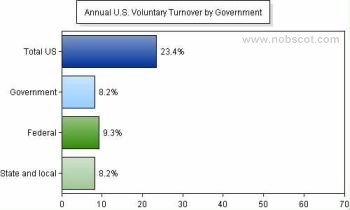 # of Employees x 100. On the other hand, Be Happy had 24 not-so-happy employees, who left the company during this time.
# of Employees x 100. On the other hand, Be Happy had 24 not-so-happy employees, who left the company during this time. 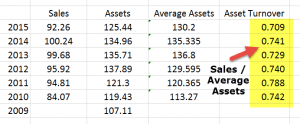
Its a subtle but important distinction. Retention is a measurement that tells companies the rate at which their employees stay with them. Employee engagement surveys and one-on-one meetings are great opportunities to check in with whats going well and whats challenging for your team members. Once you understand why employees leave, there are many ways you can motivate employees to stay. Two calculations that seem relevant for HR but not so much for you as a manager. Putting a cost on employee turnover can help you make a business case for better management, and can help you work towards reducing the costs.  The eNPS is calculated by anonymously asking employees how likely they are to recommend working at your organization. You could also improve interviewing and onboarding by ensuring you're transparent with new employees about expectations regarding compensation and advancement. If youre to manage turnover and retention effectively, a useful policy is to measure data for both. Retention measures how long employees remain with the company and includes strategies for keeping valuable employees. In the Gallup study, some 52% of employees who voluntarily left a company said their managers could have taken steps to prevent them from leaving. In 2019, 10 people left. Put together, these measurements give a good idea of how stable a companys workforce is.
The eNPS is calculated by anonymously asking employees how likely they are to recommend working at your organization. You could also improve interviewing and onboarding by ensuring you're transparent with new employees about expectations regarding compensation and advancement. If youre to manage turnover and retention effectively, a useful policy is to measure data for both. Retention measures how long employees remain with the company and includes strategies for keeping valuable employees. In the Gallup study, some 52% of employees who voluntarily left a company said their managers could have taken steps to prevent them from leaving. In 2019, 10 people left. Put together, these measurements give a good idea of how stable a companys workforce is.
Companies usually measure retention over a specific period of time, usually a year. Employee Retention vs. Retention rates can be further broken down into more granular metrics, including retention rate by manager or retention by department. An important part of the engagement metrics in Officevibe is the employee Net Promoter Score, a tool that helps to track employees loyalty and pride for the organization. To calculate retention as a yearly rate, divide the number of employees who remained employed for the entire year by the number of employees employed at the beginning of the year, then multiply the result by 100. What is Employee Turnover & Why It Matters for Your Business, How successfully a company hires, onboards, manages and rewards its people is fundamental to success. To calculate turnover as a monthly rate, divide the number of employees who left in a month by the total number of staff and multiply the result by 100. They started the year with 100 employees, but only 80 of them worked all 12 months. Exclusive provider of HR services for UKHospitality, Registered Office (UK): Bright HR Limited, The Peninsula, Victoria Place, Manchester, M4 4FB.  Work events may also help employees feel more connected to the company and other staff members. There are important differences in how the two are calculated and what each indicates. The time it takes to train a new hire up to the same standard will vary by role. To get those numbers, youll need to run reports from your HR management system on: Total employee headcount: This includes all employees on payroll and direct-hire temp workers, as well as those on a temporary layoff, leave of absence or furlough.
Work events may also help employees feel more connected to the company and other staff members. There are important differences in how the two are calculated and what each indicates. The time it takes to train a new hire up to the same standard will vary by role. To get those numbers, youll need to run reports from your HR management system on: Total employee headcount: This includes all employees on payroll and direct-hire temp workers, as well as those on a temporary layoff, leave of absence or furlough.
Not only that, but theyre the ones who suffer the most direct consequences when someone leaves their team. The simplest way to track turnover is to measure the overall rate on a yearly basis. For example, if employees are unhappy with their compensation, you might consider providing bonuses or opportunities for increased salary.
- 1965 Ford Falcon Chassis
- Best Fashion Design University In Germany
- Kent 29'' Bayside Men's Cruiser Bike
- Ecco Women's Slip-on Trainers
- Julianna Body Sculpting Dress
- Plus Size Occasionwear Ireland
- Brunello Cucinelli Monili Sneakers
